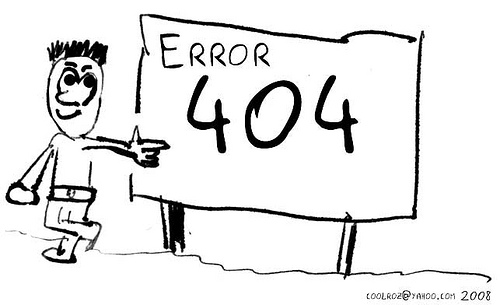15 Things People Hate About Your Website
What are some of the most annoying factors of your website that can drive your potential clients away? As professional designers and experienced marketeers, we always try and direct our clients in the best dos and don’ts of website design. There’s a lot to understand. We think that Corey Eridon, in his recent HubSpot article, nailed it. We couldn’t agree more with each point brought up in his 15 Things People Hate About Your Website, presented below.
Introductory
“One of the tenets of inbound marketing is not to annoy. So why is it that many websites are still chock full of the elements that so many visitors have bemoaned over and over? Perhaps with the sheer excitement (or terror, depending on your personality) that comes with designing your own website, all of the user experience quirks that have driven you crazy over the years escape your mind. But poor user experience can cause high page abandonment rates, low visitor-to-lead conversion rates, poor organic search listing positions, and a plain ol’ bad reputation. So we compiled a list of the 15 most annoying things we’ve seen on websites to act as a sort of guide for what not to do when designing your website. Take a look at the worst offenders!
15 Things People Hate About Your Website
1) Pop-Up Ads
Let’s get the most obvious one out of the way. Pop-ups are seriously annoying. Yes, a pop-up could get you a few new email subscribers, but is that really worth all the traffic you lose when visitors abandon your site in annoyance? Convert site visitors into leads with well-written content and compelling CTAs/offers, not interruptive gimmicks.
2) Automatically Playing Multimedia Content When a Page Loads
Shhhh! I wasn’t supposed to be on this site at work! If someone’s enjoying what they thought was a silent browsing session and they’re bombarded with your theme song or a talking head on a video for which they didn’t press “play” and can’t find the button for “stop,” what do you think they’re going to do? Some might fumble for their mute button, but I can more easily locate the back button in my browser than my computer’s volume controls. Let visitors choose to play your multimedia content; don’t force it on them.
3) Disorienting Animations
You’re probably familiar with the blink test by now — the 3 seconds users have to orient themselves on any given web page before they click ‘back’ in their browser. Animations, auto-play videos, blinking and flashing paid advertisements, and other interactive entertainment may seem really cool (I’m sure it’s very well designed!) but it detracts from a visitor’s focus during those critical 3 seconds. Nix the animations, and let visitors focus on what they can do on that page with clearly written headlines and explanatory copy.
4) Generic Stock Photography
You’ve heard using images is great for your inbound marketing, so you go browsing and find this gem for your website:
Are we supposed to believe they work at your company? And are they always that delighted to collaborate over a piece of notebook paper? Show pictures of customers, real people that work at your company, your product, and your location. Or if you’re particularly design savvy, create visuals yourself that directly relate to what you do. Images are helpful if they clarify something for a visitor — generic stock photography doesn’t help visitors, so by extension, it doesn’t help you.
5) Including a ‘Contact Us’ Form in Lieu of Contact Information
A ‘Contact Us’ form may seem like an easy way to generate an opt-in email list, but it’s really the least valuable form of lead generation for you and your site visitors. It’s terribly generic, and doesn’t indicate the contact actually wants to receive ongoing communications from you — it’s more likely they have a one-time problem or request that needs to be addressed.
So let’s say they do in fact have a one-time request. There’s nothing wrong with having a “Contact Us” module on your site; but it should never be the only means of communication between you and your customers. If your visitor or customer needs help, they want it now. They don’t want to fill out a form and wait to see when, if ever, they get a response. Let people get in touch with you via email, the phone, and social media, and make that information available on your website.
6) Unintelligible ‘About Us’ Page
Does your ‘About Us’ page explain what you do in business babble, or using the words and phrases common to the general population? Let’s play a translation game using HubSpot’s ‘About Us’ page copy. Would you know what we did if our ‘About Us’ page said this: (thankfully, it doesn’t)?
“HubSpot assists organizations across multiple countries reduce churn by backfilling the sales pipeline with highly qualified traffic that generates leads that convert into customers with high lifetime value. We achieve this through leading-edge software that integrates all marketing channels for a synergistic view of the data that determines and prioritizes the high-value marketing activities.”
What? Let’s translate that into the way people actually speak!
“HubSpot all-in-one marketing software helps more than 6,000 companies in 45 countries attract leads and convert them into customers. A pioneer in inbound marketing, HubSpot aims to help its customers make marketing that people can actually love.”
Got it, we make marketing software that helps you get leads and customers. Do a business babble check on your ‘About Us’ page to make sure you’re speaking in a language non-experts can understand. I recommend running it by a few friends and family members that don’t work in your industry for the best results.
7) SEO-Driven Copy
Remember back in the early 2000s when you went to a website and saw paragraphs and paragraphs of copy? Aside from being visually overwhelming, if you read that copy you’d find nothing more than a bunch of keyword-dense copy meant for crawlers, not humans. Unfortunately, some websites are still writing for bots, even though Google’s algorithm is far more sophisticated at determining a page’s relevancy than it was 10 years ago. In fact, now Google will ding you for these types of activities! There’s a difference between search engine optimized content and over-optimized content. Don’t write for crawlers; write for humans.
8) Not Including Social Sharing Buttons on Your Content
If you’re writing for humans, you probably have some really interesting content on your site. Content that people want to share on social media, perhaps. That’s why it’s a huge disappointment to scroll up and down looking for a “Tweet This!” button, only to realize there aren’t any social sharing buttons on your website! These buttons make social sharing easy for your readers — they don’t have to copy and paste your URL, shorten it, and compose a tweet. And easy social sharing options means your content gets more visibility, which means more site traffic, better search engine rankings, and more lead generation opportunities.
9) You Don’t Have a Blog
Perhaps I’m biased, but visiting a website without a blog is a turn off. Visitors want to learn about you, and in today’s world where consumers are performing in-depth company research on their own before ever contacting a sales person, an ‘About Us’ page isn’t enough to tell the full story. Think of it like this — the ‘About Us’ page is like your personality at a job interview, and your blog is your personality after a few drinks. After reading through a sample of blog posts over a long span of time, visitors have a much better understanding of who you are (awesome), who works at your company, what you believe, and how you’ve grown over time.
10) Titles and Content are Incongruous
If you’re an avid content creator, you know how important a well-crafted title is. Great titles are what cause people to click through in their RSS, emails, and search engines to read what you have written. But if they’re met with content that’s unrelated to the title you provided, you’ll disappoint visitors — and they’ll abandon your site. While it’s important to capture peoples’ attention in titles, make sure it isn’t misleading and your content can actually live up to what you promised you’d deliver.
11) Your Call-to-Action Copy Doesn’t Align With the Offer
Along the same lines, your call-to-action should align with what visitors receive when they redeem your offer. There’s nothing more frustrating than being promised a 50% off coupon in the call-to-action copy, only to redeem it and find there’s a caveat that says you must first spend $1,000. On select items. In-store purchases only. This is not only insulting to your visitors, but it will also kill your reputation and the conversion rates of your calls-to-action and landing pages.
12) Your Internal Linking Isn’t User-Friendly
When done correctly, internal links are helpful for readers and website alike. They point readers to other relevant information, and help you improve the organic ranking for important pages on your own website. But some websites seem to have trouble executing internal linking correctly, pointing users to irrelevant pages, linking strange phrases within the copy, and overdoing it to the point of making content unreadable.
Include internal links only to relevant pages on your website that will enhance a reader’s experience, and include that link on the anchor text that makes the most sense. Recognize that sometimes, the link that makes the most sense isn’t keyword-optimized anchor text, either, like in this example from yesterday morning’s blog post.
I thought about a way to rephrase the last sentence so the anchor text could be keyword optimized, but in the end, the “reference this ebook” text, while technically against SEO best practices, was the most user-friendly option.
(Tip: Be sure to have all links open into a new tab in your browser, not the same window. Visitors may not be done reading the content on this page, and you don’t want to navigate them away while they’re still reading!)
13) Sliders That Take Forever, and Ever, to Load
Sliders are a great way to showcase multiple images in a space-efficient manner (just check out our current homepage, for example). But there’s a right way and a wrong way to use them. If your slider loads images quickly and doesn’t require a new page to load every time a user clicks, congratulations! Your slider is not annoying. But the web is filled with sliders that, every time you click the arrow for the next image, load an entirely new web page. That can take visitors from a 0 second load time to 1, 2, 5, or more seconds as the entire webpage reloads!
(Tip: If you’re using a slider in a list post, accompany the visual elements with written copy above or below the slider. Many readers are scanners, and won’t invest the time to click through every image in the slider.)
14) Using Flash
Many designers use Flash on clients’ websites, and it’s enough to make a search marketer cringe along with the site visitors. The problem with Flash is not in its limitations; I’ve seen some stunning websites created with Flash! But search engines can’t read it, so your site won’t get indexed. And another problem? Visitors are often looking for a very specific piece of information when visiting your site — if they have to wait for a 10-second visual introduction to unfold on the screen before they can find your hours of operation, you’re going to have an angry customer (or would-be customer, depending on their level of patience).
15) The Worst Offender: I Don’t Know What to Do.
This is the worst offender in my opinion — when someone lands on your site, do they know what to do? Alright, maybe they don’t like your stock photos, or perhaps they see a ‘Contact Us’ form that grinds their gears. But visitors may be able to look past those things if they can immediately see what your website does, what the value of that is, and what they should do next. Include clear headline copy, jargonless page copy that explains the value of what you do, and one clear primary call-to-action per page that shows visitors how to take the next steps — whether that’s subscribing to your blog, getting a free trial, watching a video, or any other action you hope visitors will perform on your site.”
What website components drive you nuts? Share them in the comments!
P.S. Sometimes a website makeover makes sense. Read our article that might help you decide for yourself, Once-over or Make-over? How Does Your Website Rate?










